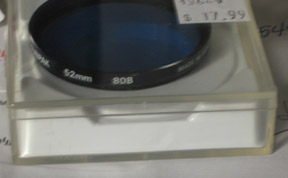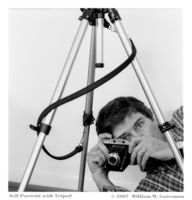March 11, 2011
A few years ago, my photo, Pete Plays the Blues, was on exhibit in Laurel, Maryland. One night, as the gallery was closing, I noticed the strangest thing. The subject of the painting next to my photo suddenly turned her face to look at my photo. In the silence of the gallery, I could just make out her whisper as she exclaimed, “Ooooh!”

February 13, 2011
I have completed the upgrades to my online photo gallery. The appearance of the new Gallery is consistent with my other related websites. While I had all the pictures crowded together in two main galleries, I was not happy with that organization. Now, each type of photograph resides in its own specialized sub-Gallery.
You may visit the gallery at www.wmgphoto.com.
December 11, 2010
With digital cameras, photographers no longer have to pay much attention to the nature of light, and in particular, the color temperature of light, because digital cameras automatically adjust for differing light temperatures. For those of us who still shoot using film, however, color temperature is an important consideration.
I am a low budget photographer. Once a year, I set up a photo studio in my living room to take portraits of my family. Rather than purchase high cost studio lights for this purpose, I typically use low cost construction lights, although I recently picked up a high intensity movie light at an estate sale.
Both light sources have a color temperature of between 3200 and 3400 Kelvin. Sunlight has a color temperature of 5500 Kelvin at high noon on a sunny day. While the color temperature of the light is not an issue when I shoot using black and white film, which I have done in years past, this year, I decided to shoot using color print film.
Unfortunately, color print film is designed to record images under daylight lighting conditions. While a photo flash produces light with the same color temperature as daylight, my flash unit has died and I have not yet replaced it. And in any event, the flash is not sufficient to light my subject appropriately.
Below is a photograph of a scene shot in color using my budget lighting sources without modification. As you can see, the 3200 to 3400 Kelvin light sources leave a yellow color cast over the whole scene.

In order to rectify this situation without breaking the bank, I decided to change the color temperature of the light using reflectors. Fortunately, I had a reflecting umbrella with a blue tint to change the light temperature for the movie light, but my other reflecting umbrella had a silver surface, which did not change the color of the light. So what I did was purchase blue foil wrapping paper from the Party Store to line the inside of my second umbrella. Then, when I shine my construction lights into the umbrella, the reflected light has more blue in it thereby converting my 3200 Kelvin light to a 5500 Kelvin daylight equivalent. Below is a photo of the lighting set up.

When I shot the same scene using the blue modified light, the colors were much more natural, as shown in the photo below.

The other way to change the color temperature of the light would be to use an 80A or 80B lens filter. With the light sources I was using, an 80B would be the appropriate filter. However, doing so likely would have required a greater exposure compensation than would be required using the umbrellas. Because the blue filter reduces the amount of light that passes through the lens to the film, the shutter must remain open a longer period of time to make the photo. Below is a picture of my 80B filter.

I enjoyed my foray into the science of light and the process of light modification necessitated by my desire to shoot this year’s portraits using color film.
September 29, 2010
The Associated Press reports that modern audio recordings, including recorded oral histories, are at much greater risk of being corrupted and lost forever than are the old, analog recordings made on tape and other archaic media. The article points out that DVD and CD media begin to degrade and lose data in as little as five years.
The same can be said about one’s digital photographic files. One of the benefits of my methodology of shooting on film, scanning the image and then creating the digital photograph is that I have the analog film media to back up my image files. Also, I print my pictures using carbon pigment ink, which is less prone to degradation than the dye based inks typical to ink jet printers.
September 26, 2010
There is an image I have been carrying around for more than 20 years, intending to do something with it. Finally, this image will go out as Issue No. 2 in the Post Card Project. Over time, events have transpired to give meaning to the image, and out of that comes its title:
Imagining the Other Side

____________________________________________________







